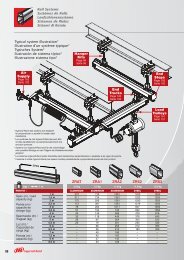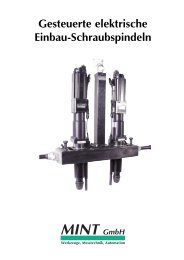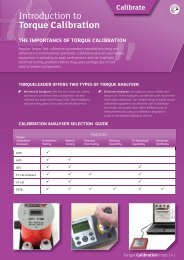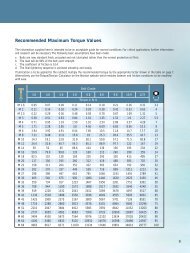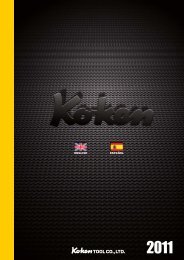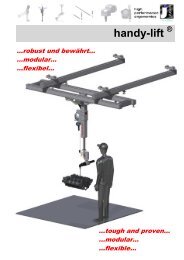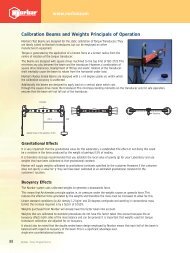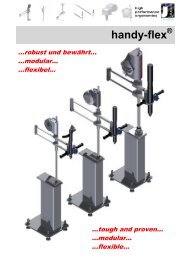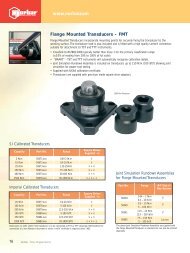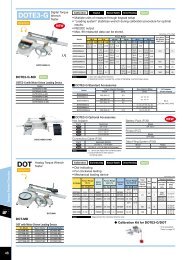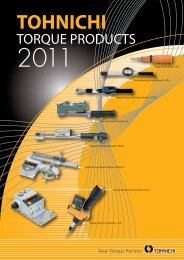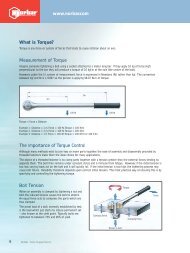NORBAR PRODUCT CATALOGUE
NORBAR PRODUCT CATALOGUE
NORBAR PRODUCT CATALOGUE
- No tags were found...
Create successful ePaper yourself
Turn your PDF publications into a flip-book with our unique Google optimized e-Paper software.
www.norbar.comWhat is Torque?Torque is any force or system of forces that tends to cause rotation about an axis.Measurement of TorqueImagine someone tightening a bolt using a socket attached to a meter long bar. If they apply 10 kg of force (kgf)perpendicular to the bar they will produce a torque of 10 kgf.m at the axis (the centre of the bolt).However, under the S.I. system of measurement, force is expressed in Newtons (N) rather than kgf. The conversionbetween kgf and N is x 9.807 so the person is applying 98.07 N.m of torque.1m2m100 N100 NTorque = Force x DistanceExample 1: Distance = 1 m, Force = 100 N,Torque = 100 N.m.Example 2: Distance = 2 m, Force = 100 N,Torque = 200 N.m.Example 3: Distance = 1 ft, Force = 100 lbf,Torque = 100 lbf.ft (or 100 ft.lb)The Importance of Torque ControlAlthough many methods exist to join two or more parts together, the ease of assembly and disassembly provided bythreaded fasteners make them the ideal choice for many applications.The object of a threaded fastener is to clamp parts together with a tension greater than the external forces tending toseparate them. The bolt then remains under constant stress and is immune from fatigue. However, if the initial tension istoo low, varying loads act on the bolt and it will quickly fail. If the initial tension is too high, the tightening process maycause bolt failure. Reliability therefore depends upon correct initial tension. The most practical way of ensuring this is byspecifying and controlling the tightening torque.Bolt TensionWhen an assembly is clamped by tightening a nut andbolt, the induced tension causes the bolt to stretch.An equal force acts to compress the parts which arethus clamped.The proof load of a bolt, normally established by test,is the load which just starts to induce permanent set– also known as the yield point. Typically bolts aretightened to between 75% and 90% of yield.Clamping ForceTorqueClamping ForceForceTension in bolt6 Norbar - Total Torque Control



